Think you're reaching the right audience? Without the correct match type in your corner, you might as well be throwing your ad budget into a black hole.
Whether you're running a PPC campaign for the first time or you're a seasoned pro refining your SEO strategies, understanding match types is a must.
Why? Because match types dictate who actually sees your ads and how well your campaigns align with user intent.
This article is your ultimate guide to mastering keyword match types, improving ad performance, and driving meaningful clicks.
We'll cover the main match types, their pros and cons, and practical examples to sharpen your advertising toolkit.
What Are Match Types?
Match types are your best friends (or, if not fully managed or understood, your enemies) in paid search.
Simply put, match types set the rules for how search engines match your ads to user search queries. Think of them as your tool for controlling which searches can trigger your ads.
Different platforms like Google Ads or Bing Ads categorize keywords by match types, helping you safely wade through billions of queries.
The main types include broad match, phrase match, exact match, and negative keywords, each with its own way of connecting ads to potential leads. From attracting a wider audience to narrowing your target with surgical precision, match types are key when it comes to aligning user intent with your campaign goals.
What’s often overlooked is how these match types influence not just clicks but also vital metrics like CTR, ROAS, conversion rates, and, of course, your precious ad spend. If you’re not optimizing for match types, you’re playing catch-up with your competitors.
The Broad Match Type
Broad match is like tossing a wide-open net into the ocean of search queries. It’s the default match type in Google Ads and uses algorithms to link your ads to related searches.
Broad match keywords give your campaign reach, showing ads for queries with close variations, synonyms, or even completely related searches.
For example, if your keyword is “running shoes,” your ad might show up for “sneakers for jogging” or “athletic footwear deals.”
The beauty of broad match lies in its ability to identify potential opportunities you might not have considered. But here’s the catch: broad match risks attracting irrelevant traffic. A careless campaign could mean paying for clicks that don’t convert.
Want to make it work for you? Pair broad match with smart bidding strategies. By aligning broad keywords with machine learning, you can understand user intent better and focus your ad spend on clicks likely to convert. Broad match works best in early-stage campaigns where testing and discovery of new keywords are key.
The Phrase Match Type
Phrase match bridges the gap between broad and exact match. When you use phrase match keywords, your ads appear only for search terms that include your exact phrase or close variants.
This match type is ideal when you’re targeting prospects searching for specific phrases related to your product or service. Google has updated how phrase match works, extending its reach while still retaining the control of its earlier versions.
Take the keyword “affordable office chairs.” With phrase match, your ad could show up for “best affordable office chairs for small spaces,” but not for unrelated queries like “cheap gaming chairs.”
Phrase match balances precision and flexibility, making it great for mid-stage campaigns driving more relevant searches without being overly restrictive.
One challenge? It might cost you a bit more since you’re narrowing the playing field compared to broad match. However, pairing phrase match with negative keyword lists can cut down on irrelevant clicks and boost overall CTR while increasing ad group performance.
The Exact Match Type
Exact match keywords are your golden ticket for hyper-targeted user intent. By using exact match (marked with square brackets, like [custom desks]), you guarantee your ads are triggered only when a search query closely matches your keyword.
It’s the best fit for high-intent searches where precision matters. If someone searches “custom desks for small offices,” you know they’re looking for exactly what you offer. That’s powerful.
The clear advantage of exact match lies in its uncanny ability to improve ROI by reducing irrelevant traffic and increasing conversion rates.
However, it’s not without its trade-offs. Exact match significantly narrows your reach, limiting your ad’s exposure. To make it work, leverage it for high-value products or niche offerings that rely on specificity.
The Broad Match Modifier
The broad match modifier was a fan favorite before Google moved its functionality into phrase match in 2021. Though no longer a standalone option, understanding its principles is still valuable.
Broad match modifiers required specific keywords to appear in the query while keeping the flexibility of broad match.
While phrase match offers much of the same utility today, keeping up with shifts in how Google Ads operates will help ensure your campaigns stay competitive.
Negative Keywords
Negative keywords are your safeguard against wasted ad spend. They prevent your ads from showing up for irrelevant or unrelated searches that eat through your budget.
For example, if you’re advertising “luxury watches,” adding “cheap” and “imitation” to your negative keyword list will block those mismatched clicks.
Failing to include negative keywords results in wasted ad spend and lower quality scores, with ad algorithms penalizing irrelevant matches.
To avoid this, regularly review your search terms report to identify opportunities for refining your negative keyword strategy. This will help you make sure your ads capture only the leads that matter.
Best Practices for Choosing the Right Match Type
Start with your goals. Are you focused on building brand awareness, driving traffic, or increasing conversion rates? These objectives should shape your approach to all the different match types.
Broad match might work well for discovery campaigns, helping you identify new keywords, while exact match excels at pulling in high-intent traffic to a landing page.
Automation is your friend, but it works best when paired with human oversight. Tools like Performance Max and smart bidding can handle the heavy lifting, but regularly reviewing Google Ads reports ensures your algorithms are staying on target.
Combine match types within a single campaign to see the full spectrum of a user’s search intent. For example, use broad match to expand your reach while layering in exact match keywords to capture the most relevant audience. Tools like negative keyword match types provide additional control, letting you block irrelevant traffic and make room for valuable clicks.
Finally, don’t forget to monitor key metrics like click-through rates, conversion rates, and ROAS. Each of these provides insight into how your match type strategy is performing and whether it’s time to reallocate your budget.
Common Mistakes to Avoid
One of the most common pitfalls in PPC campaigns is over-relying on one match type.
Sure, broad match sounds appealing for its reach, but without careful tracking through tools like the search terms report, it can burn through your ad spend fast on irrelevant clicks. Similarly, failing to update your negative keyword list leaves room for irrelevant searches (or even those due to misspellings) to creep into your campaign.
Another mistake is neglecting to refine your keyword targeting as your campaign evolves. User intent, search behavior, and even search engine algorithms shift over time. Sticking religiously to old keyword strategies without periodic audits can stunt your campaign performance. Be proactive. Review search query data in your reports and adjust accordingly.
Forgetting to test is another costly error. Smart bidding and machine learning are powerful, but they’re not magic buttons. A/B test your match types to see what resonates most with your target audience for a specific campaign.
The Role of Match Types in Holistic Ad Strategies
The role of match types doesn’t stop at your Google Ads campaigns. Effective digital marketing campaigns often extend across platforms like Bing Ads, Facebook Ads, and even LinkedIn. Match type strategies can be adapted to each platform, ensuring your ads remain contextually relevant while scaling campaigns.
For example, phrase match keywords can serve you well in platforms that emphasize user intent, like search ads on Bing or Google. Meanwhile, negative keywords are non-negotiable for platforms where broader targeting risks irrelevant competition.
Scaling your campaigns and integrating match types across platforms requires a deep understanding of both the algorithms behind these systems and the search terms your audience is using.
Why Match Types Matter
At the end of the day, match types are more than a digital marketing concept. They’re powerful tools for aligning your campaign’s goals with user intent, ensuring every dollar you spend pulls its weight.
Whether you’re a small business owner or a brand manager, understanding and implementing the right keyword targeting strategy means fewer irrelevant clicks, better conversion rates, and a more engaged audience.
Now’s the time to analyze your campaigns. Look at your match types.
Are you leveraging broad match keywords for discovery, and phrase match for mid-level intent? Do you use exact match for targeting high-intent searches? Are you using negative keywords to filter irrelevant traffic? Maybe it’s time to revisit your search campaigns and fine-tune every keyword match type.
If you’re feeling overwhelmed or just want an expert second opinion, reach out to Kinetic319. Whether it’s refining your current campaigns or scaling them to new heights, we’ve got the expertise to take your digital marketing game to the next level.
No irrelevant clicks. No wasted budgets. Just smart, effective advertising that works.

